Hello and welcome to the 14th episode of the recurring series, Year 2 in Kyoto…😊. I thought I’d make up for the large gap between the previous two episodes by bringing this one forward. Also, since the BIG explanatory meeting for our neighbours is on this Sunday, it seemed sensible to get this one to the presses early.
The past week has been much more relaxed, if a little bit like a saga where the protagonists are wandering around somewhat confused. We received an email post the meeting with the scrivener which said they hoped we were getting ourselves organised for the BIG meeting, including updating our minshuku policies which we will be handing out to our neighbours on the day. So we have been left wondering exactly how to update this document (which is the policy document for our guests, laying down ye olde rules of the house). We have sent a reply asking what exactly they want amended or what to add, but haven’t had a response, as yet.
We have also been trying to find a rubbish collector for our business (and us), to comply with the Hotel Licence application rules, but have had little success in this endeavour so far. The company recommended to us by our builder said his trucks would be too big for our street, so he recommended another company. That company also said their trucks would be too big…In the meantime Craig had met one of our neighbours from the next door flats, a very nice woman who just happened to speak very good English. We knew that there was a company collecting the rubbish from the flats, so we asked this neighbour if she knew who collected their rubbish.
A few days later she came back to us and said the rubbish company for the flats (from Osaka) was not interested in contracting with us direct, but would be happy for us to sub-contract through the owner of the flats. She thought this wasn’t a good idea (and so do we), so she gave us the number of the rubbish collection section in the Kyoto government, for us to enquire if they know of a collector which has small enough trucks. Sigh – more news on this in the fullness of time!
The above serves to illustrate yet again just how helpful most of the Japanese people are. The amount of effort this woman went to to help us out, making at least three phone calls, is amazing. Needless to say, we are in her debt and, along with the man who found out who the community chairman is for the group next to us and his friend that gave him the information, we will invite them for a meal in the near future.
Weather-wise it certainly has warmed up now, with most days in the high 20s or low 30s and then the occasional day of rain (rain that periodically stops, as the forecast says). It is still not overly humid yet, with the days after the day of “rain that periodically stops” being slightly humid. So, running errands and going out generally is most pleasant – of course, I take my parasol on these outings!
During this period we have had two major outings, one which was a follow-up from my last post and the other to retrace the walk from our home to Fushimi Inari, visit the temples we didn’t go into last time and to take photos of the path to create a walking guide for our guests (one day, when we can actually have guests as an official hotel…).
Last post I talked a little about Sakamoto Ryōma, who started out as a ronin (masterless samurai), then ended up as a samurai assisting a high ranking official in the Tokugawa shogunate. I discovered during my research that Sakamoto and his friend, Nakaoka Shintarō, who was with Sakamoto on the night that he was assassinated (and who died a few days later) are buried together at the Ryosen Gokoku jinja (shrine), which is close to our home. I had never been to this shrine, which is nearly directly behind the giant Ryozen Kannon, so I just had to go and see it.
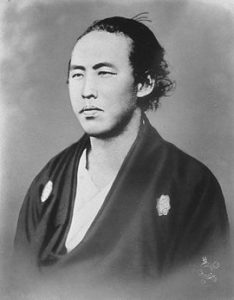
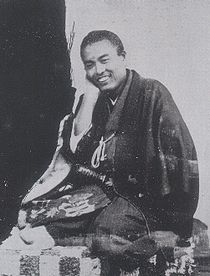
As with some shrines which are very important, ie have connections to very important people, there will be a very large torii at the end of the road leading up to the shrine. So it is with this shrine – I had seen the torii many times before and had wondered which shrine it related to, so now I know!! The shrine itself is up a fairly steep road and it is one of those that very few foreigners actually go to, which means it is fairly quiet. Unlike most shrines, there is a fee to go into this one but it isn’t much. Next to the burial site is a bronze statue of the pair, which overlooks Kyoto. The view from there is very good and certainly rivals the view from Fushimi Inari.
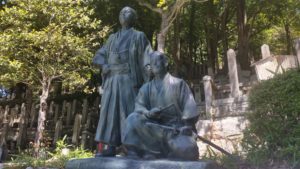
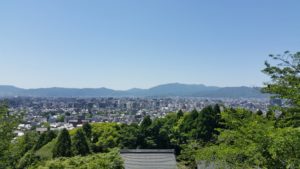
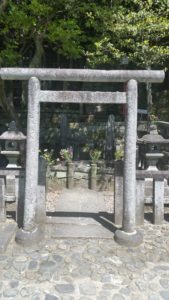
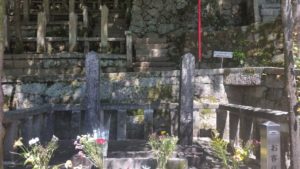
I also spent some time after my last post checking the storyline of The Samurai, one of my favourite TV shows when I was young, because the main character on that was named Shintaro. What I found was that, while there are many similarities between the story of Shintaro in the TV program and that of both Sakamoto and Nakaoka, there isn’t any direct link to the story of the real Shintaro.
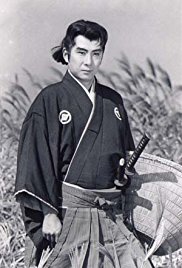 TV Shintaro
TV Shintaro
The other main outing we undertook was the retracing of the trail to Fushimi Inari. Along the way there are two significant temples which I wanted to visit; Imakumano Kannonji and Sennyuji. Both of these, as it turned out, are also rarely visited by foreigners and, on the day, there were very few people there. They were both lovely places to visit and there was a tangible serenity within their surrounds.
Imakumano Kannonji is a sub-temple of Sennyuji and is one of the West Japan 33 Kannon Temple Pilgrimage sites. It was founded by Kobo Daishi (Kukai) in 820CE, when it is said he carved an image of the Kannon out of wood himself and then enshrined it in a hut there (although it is not known if this is actually true or not). There is a carved statue of the Kannon from this time still in existence on display. There is also a large bronze statue of Kobo Daishi in the lead up to the main temple area and, on the temple plateau, there is a bronze statue of Bokefuji Kannon who is prayed to by those who want to prevent senile dementia. Around the base of this statue are small figurines of elderly men and women, no doubt placed there for the same purpose. Emperor Goshirakawa was buried at the site in 1234.
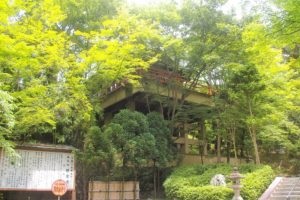

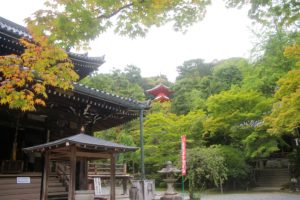
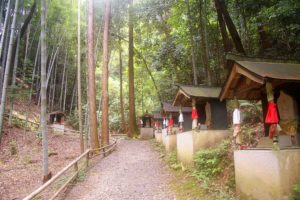
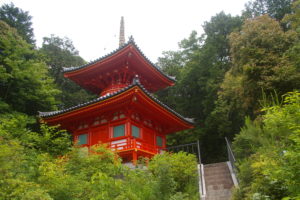
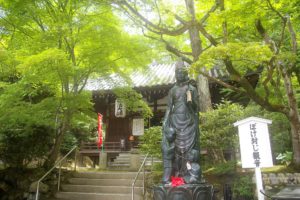
Sennyuji was founded in the early Heian period (running from 794 to 1185). Located here are the official tombs of Emperor Shijo (1242) and many of the emperors who came after him, as well as Emperor Gohorikawa (immediate predecessor of Shijo). The main Buddha hall was rebuilt in 1668 by Tokugawa Ietsuna and has a painting of a dragon on the central panel of the ceiling. A beautiful place, with an interesting mix of architectural styles and I suspect a must see in Autumn.
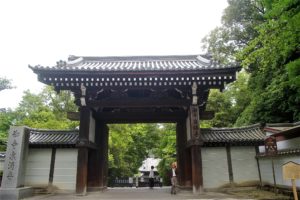
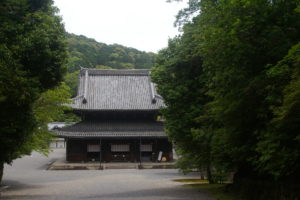
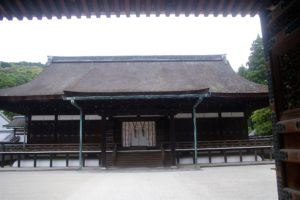
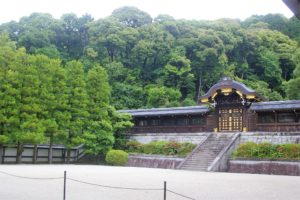
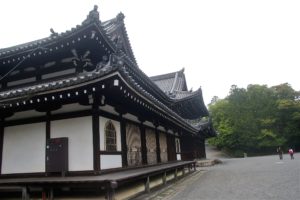
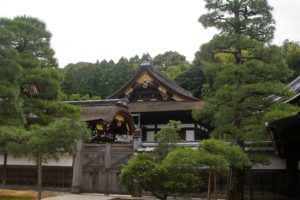
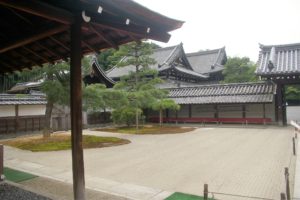
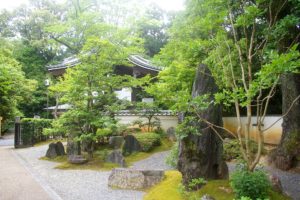
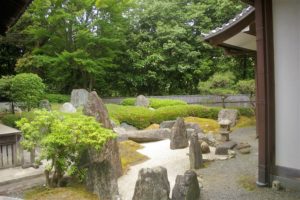
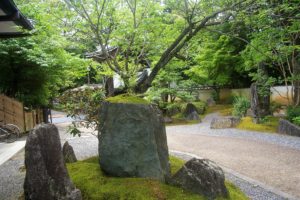
After we finished the walk, we took the train back to Tofukuji station and took a different path home from the station, just to see a different area. On the way home, we came across a small shrine in the backstreets, called Takio Jinja. Apparently it used to be located over near the fabric district but was badly damaged during the Onin War, a civil war that lasted from 1467 to 1477, and subsequently moved to this location. One very interesting part of this temple, is a large carved wooden dragon hanging from the ceiling of the worship hall.
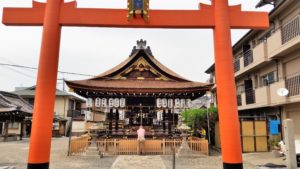
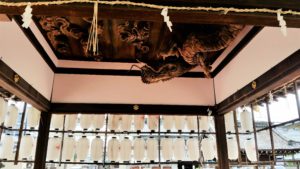
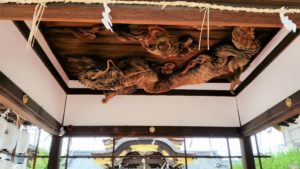
Amazing what you can find in backstreets. One thing is certainly clear, buildings in Kyoto have a way of moving sites over time!!
That’s all for now – cheers!
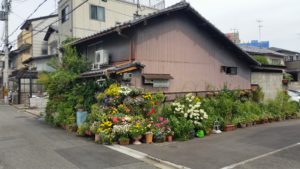
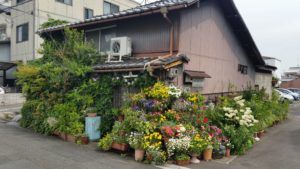
The garden you have when you don’t have any land!!
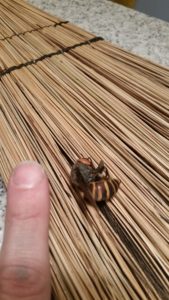
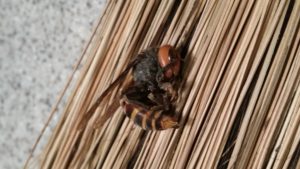
Something Craig found out the front while he was sweeping – and it’s not a bee…
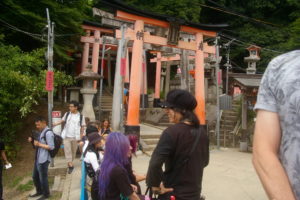
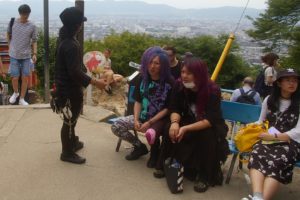
Some interesting characters at Fushimi Inari. Kakkoii!!!
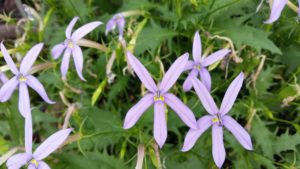
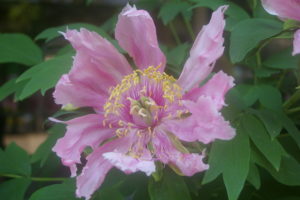
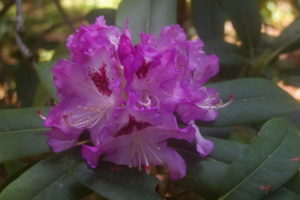
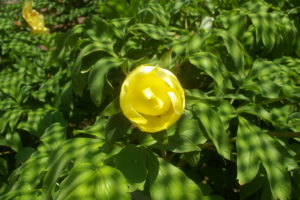
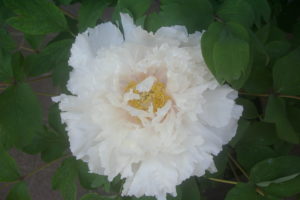
…and that’s your lot…for this post

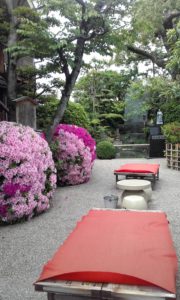
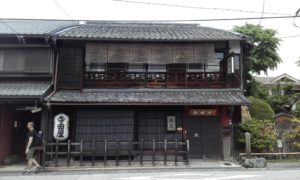
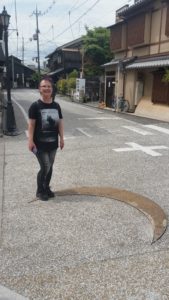
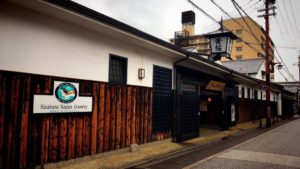
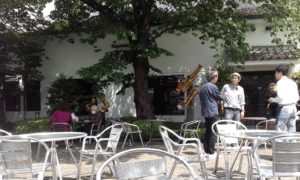
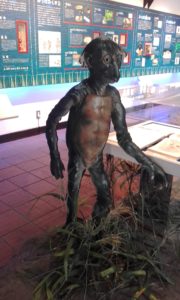
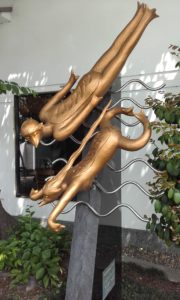
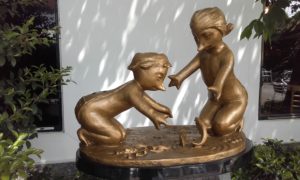
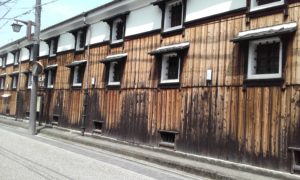
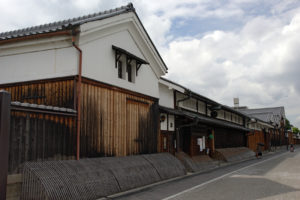
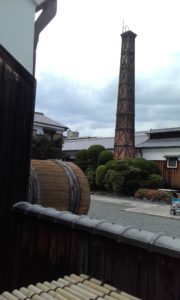
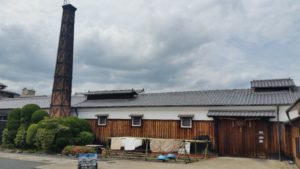
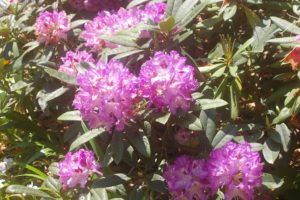
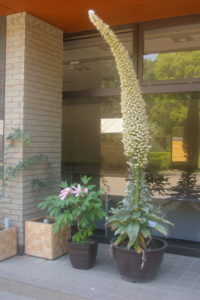
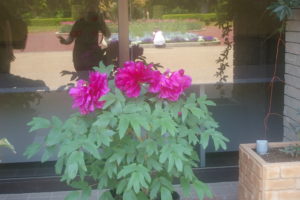
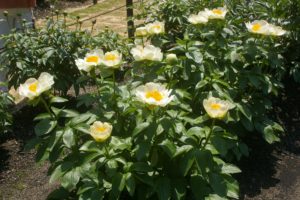
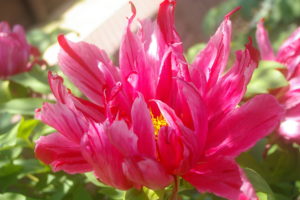
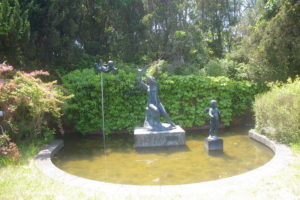
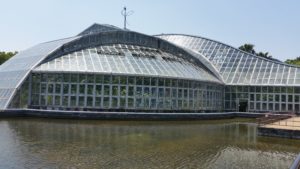
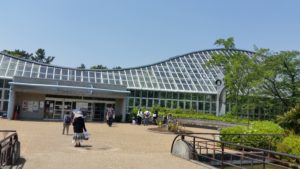
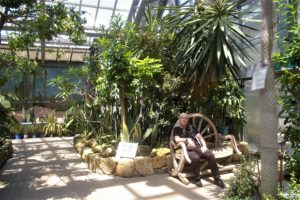
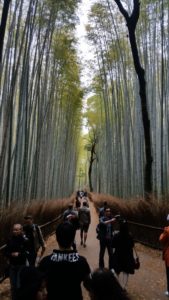
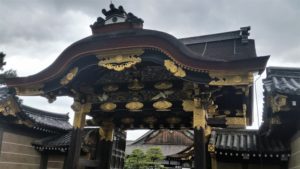
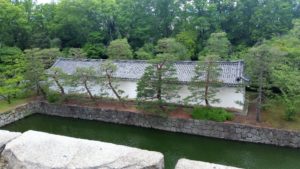
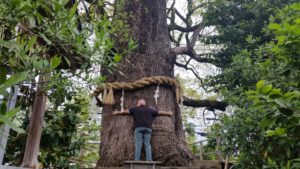
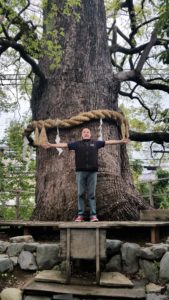 Colin’s best Uncle Fester impression!
Colin’s best Uncle Fester impression!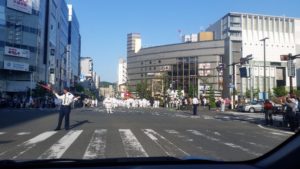
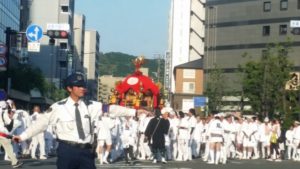


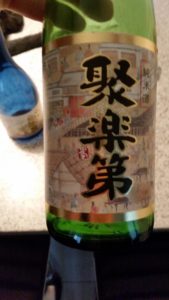
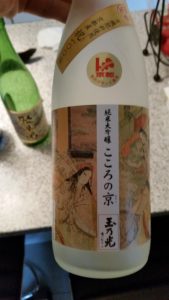 Tasting at a bottle shop
Tasting at a bottle shop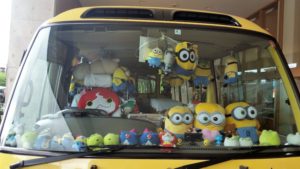
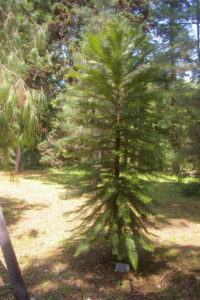 An Australian in the Botanic Gardens
An Australian in the Botanic Gardens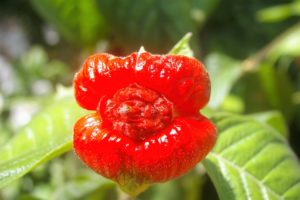 !Stranger than fiction
!Stranger than fiction